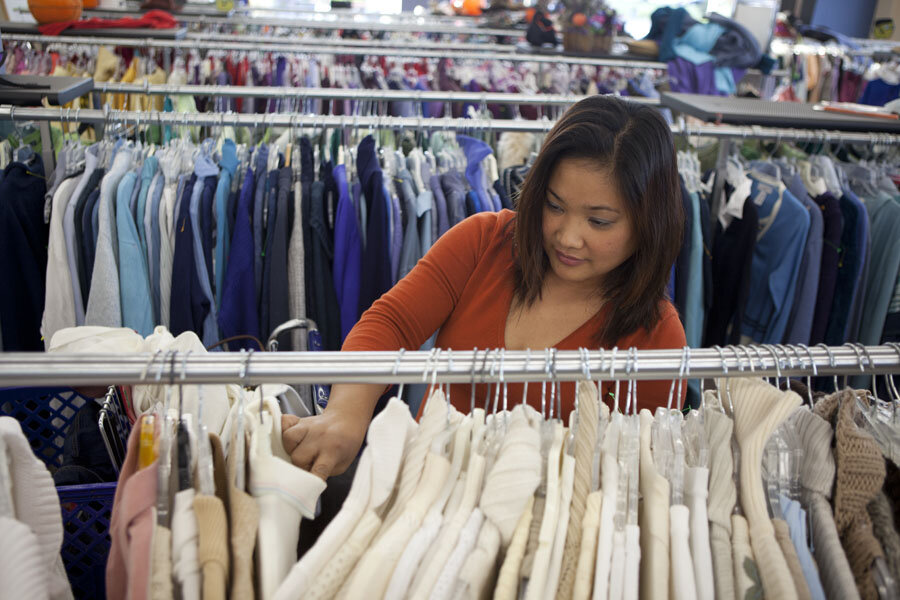Five ways having good taste might save you money
Loading...
Good taste is a little perk, like knowing Esperanto or playing the accordion really, really well. It can help you save money on otherwise expensive purchases and enables you to pick out diamonds in the rough at garage sales or discount shops.
Here are five major ways having good taste can save you money.
1. Score Great Finds at Thrift Stores
Good taste can make shopping at thrift stores and garage sales a fairy tale experience. Even in a picked-over, second-hand market like Los Angeles, I can usually find valuable items that are severely under-priced. I built a side business buying and then reselling vintage items online and to local interior decorators. As a second-hand shopper, good taste helps me make an extra $5,000 a year.
2. Save Money on Clothing
I live in Los Angeles, which means that I have access to many excellent used clothing stores. However, even if I lived in the boonies, good taste makes buying clothes on a budget much easier, mainly because I know exactly what looks good on me. I know, for example that the most flattering skirt length on me is right at mid-knee. So, even though mid-calf skirts are all the rage for summer, I will be sitting out this trend. Why waste money on clothes that look terrible on me?
In addition to ignoring bad fashion advice, good taste helps me find designer quality garments without the designer price. For example, the classic knit wrap dress is my go-to garment for work. They don't wrinkle, they pack well, and they are easy to dress up and down with just a change of accessories. While I must credit Diane Von Furstenberg for her original design, even if I could afford her dresses, I couldn't wear them — I'm too long-waisted. After trying on approximately 450,000 wrap dresses at all price points, I've found a brand that fits my long torso to a T. At $84 the PERI Pure Eco-Rag Industry wrap dress is still pricey. However, when compared to the similar Diane Von Furstenberg dress that costs $368, the PERI dress is practically a steal. And, although exactly no one can tell this without looking at the tag, the PERI dress is made in the United States, out of organic, biodegradable, and recyclable fabric that is dyed using low-impact dyes in a solar-powered factory.
3. Decorate Frugally
I didn't know that the $3 garage sale coffee table would be valued at $1200 when I bought it, but I knew just by looking at its streamlined shape that it was worth snapping up. With the exception of my mattress and my armoire, all of my furniture was purchased second hand, at a steep discount, or actually rescued from the curb on trash day.
While owning used furniture really isn't anything to brag about, the fact that my home has been featured in numerous newspapers and magazines including the New York Times, and was a runner up for the Metropolitan Home Award, is. Good taste allows me to see the potential of lowly items. My red mohair sofa that everyone thinks is a Jean-Michel Frank original, started life as a $99 mustard yellow Hide-a-Bed.
4. Know What to Pay for Quality
Even unskilled cooks can make delicious meals with the right ingredients. But quality ingredients don't have to come with a huge price tag. In fact, according to a recent study by the University of Chicago's Booth School of Business, the more informed the shopper, they more likely he is to buy store brands. The study specifically compared the shopping habits of pharmacists and chefs to less expert consumers. Researchers discovered that 77% of chefs preferred generic store brands over national brands for pantry staples like sugar, salt, and flour.
Although generic food got a bad rap in the 1970s when the quality was very poor, this is no longer the case. Store brands like Costco's Kirkland line and Trader Joe's are often superior to their name brand competitors. Simply put, store brands don't have to pay for marketing, and this 25% savings is passed along to the consumer without impacting the product quality.
Even more shocking are the numbers for generic drugs. The researchers found that pharmacists only bought national brands of over-the-counter drugs 8.5% of the time, while the average consumer bought them 26% percent of the time. The research also revealed that people without a college education were especially likely to buy the more expensive name brand drugs.
5. Save on Good Design
Design sense is a rare talent that people are born with. If everyone had good taste, then there would be no work for artists, designers, or architects. Luckily, good taste can be faked. It's called being an educated consumer. I was lucky enough to hone my design sense as a child by spending thousands of hours sorting through swap meet merchandise with my grandmother who was an interior decorator.
Practice does make perfect. Before making any big purchase, compare, compare, compare. Read online comments and reviews. If the financial risk is low enough, do a taste test! Spend $2 and try the store brand tomato sauce. Cover the sofa you trash picked with a white sheet and see if you can fool your guests into believing it's a family heirloom hiding under a dust cover. Improve your skills as a "selector" on inexpensive items. If your trash picked sofa doesn't work out, what have you really lost? Nothing. You now know one thing that shouldn't be in your living room, so you are actually ahead in your design education. And, if you fool the company, then you know your instincts were right!
This article is from Max Wong of Wise Bread, an award-winning personal finance and credit card comparison website.







